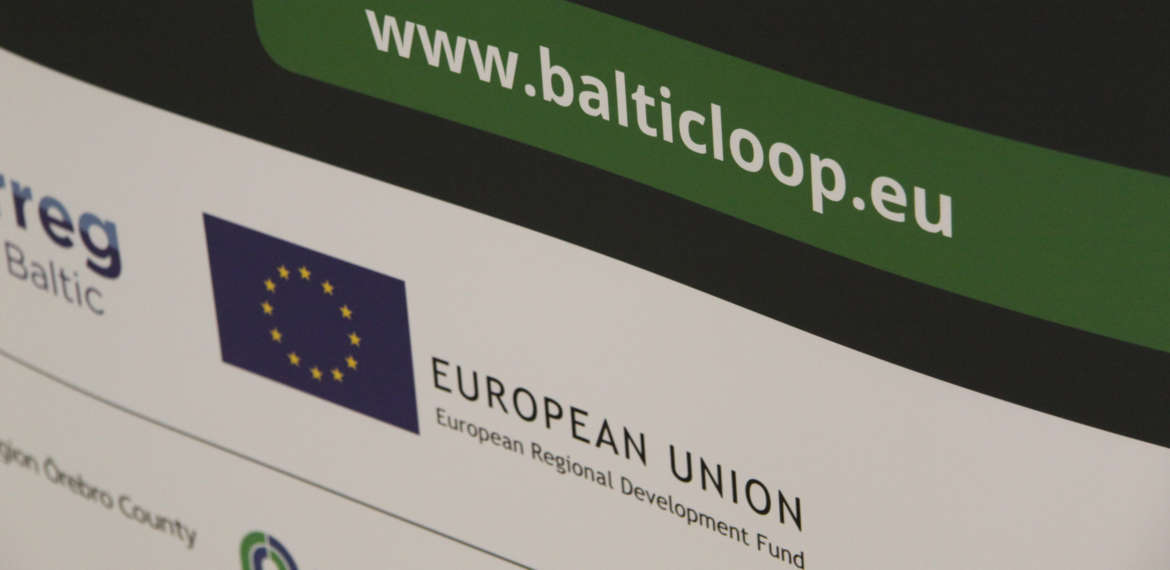Baltic Loop – smooth travel on the Baltic Sea
Baltic Loop develops concrete means for making the travel and transports of both people and goods easier in the Baltic Sea region. The traffic network has to be efficient, but at the same time the solutions need to reduce emissions.

There are three transverse routes in the Baltic Sea region serving as transport corridors between Örebro in Sweden and St. Petersburg in Russia. The northernmost of those passes through Turku, the central one through Estonia and Tallinn, and the southernmost through Riga and Latvia. The westward connections from Örebro are also slow. The train crawls from Stockholm to Oslo at 80 kilometres per hour. The travel time is five hours, so there is room for improvement. The Baltic Loop project develops these routes and aims at removing both physical obstacles and those related to the flow of information.
“Things need to be looked at more comprehensively and with a longer time span. The resources invested in infrastructure have to be distributed with attention to the needs of both residences and transports. Reachability and connections to the port are very important”, says Project Coordinator Irina Wahlström from the Department of Industrial Management in Åbo Akademi University.
Within the project, Åbo Akademi focuses particularly in new business models of port operations and the development of maritime logistics. Ms Wahlström has excellent knowledge on the branch as she has previously worked in the shipping industry for 15 years.
”We can do even better”
It is now known that the transport volume and needs will increase by around two per cent a year.
”We are far away from the Central European markets, the distances are long. We are good, but we can certainly do even better at enhancing the logistics chain.”

Magnus Hellström, Associate Professor of Industrial Management in Åbo Akademi University says that the interest of the research group originated with the sulphur directive that was introduced in 2015. Would it wreck the competitiveness of the Finnish shipping companies and export industry? The question made them re-think the vision of logistics in the Baltic Sea.
”We tried to choose the path of innovation, examined the filling rate and business models of ships. It was found out that the ships stay idle for way too long without doing anything and sail without full loads”, Ms Wahlström says.
Logistics lack transparency and functionality, which forms a grey area for the flow of information in the transport chain. It would also be sensible from the environmental point of view to co-ordinate the transports with maximum loads. A vessel that sails half empty generates unnecessary emissions.
”If we think that transport corridors are systems, there lies inefficiency in them. If we look at a single shipment, it’s just one point of view. From the point of view of goods transports it would be more sensible to increase the filling rates. One solution could be a marketplace for cargo. Could some party in the hubs take responsibility for co-ordination or contribute to it, in order to improve the efficiency of the whole system?” Mr Hellström ponders.
Arrival in the port at just the right time
One new idea is a virtual port call which is already partly in use. It also anticipates the arrivals in ports.
“Traficom talks about the digitalisation of transport corridors, open data, which would provide a better control of the matter”, Mr Hellström says.
According to Ms Wahlström, it is typical that the ports operate on a ”first come, first served ”basis. A vessel can sail fast only to notice that there is a queue in the port. If it is possible to arrive in the port ”just in time”, emissions can also be cut.
”A great revolution of traffic lies in how the information technology can be utilised in the future”, Ms Wahlström believes. The Baltic Loop project aims at providing concrete new ideas.
Text and photo: Sini Silvàn
Info:
- Baltic Loop project 2019–2021, budget 2 million euros.
- The project develops efficient transport solutions for three east–west transport corridors.
- The main goal is unobstructed movement of people and goods.
- By enhancing transports and electronic logistics it is also possible to reduce carbon dioxide emissions.
- Project partners from Turku are Åbo Akademi University, and Turku University of Applied Sciences which acts as the co-ordinator of the project.
- The project involves four countries (Estonia, Sweden, Finland and Latvia) and a total of seven partners which represent land use, management of traffic infrastructure, authorities, and research.
- Åbo Akademi University’s point of view focuses especially on port business and maritime traffic.
- The routes are also part of the TEN-T core network.
- Turku University of Applied Sciences optimises the internal operation and locations of terminals while Åbo Akademi University focuses on business models of ports and maritime logistics.
